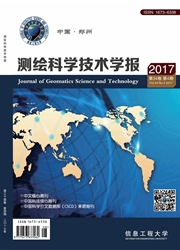

 中文摘要:
中文摘要:
The planetary lander usually selects image feature points and tracks them from frame to frame in order to determine its own position and velocity during landing. Aiming to keep features tracking in consecutive frames, this paper proposes an approach of calculating the field of view(FOV) overlapping area in a 2D plane. Then the rotational and translational motion constraints of the lander can be found. If the FOVs intersects each other, the horizontal velocity of the lander is quickly estimated based on the least square method after the ill-conditioned matrices are eliminated previously. The Monte Carlo simulation results show that the proposed approach is not only able to recover the ego-motion of planetary lander, but also improves the stabilization performance. The relationship of the estimation error, running time and number of points is shown in the simulation results as well.
 英文摘要:
英文摘要:
The planetary lander usually selects image feature points and tracks them from frame to frame in order to determine its own position and velocity during landing. Aiming to keep features tracking in consecutive frames, this paper proposes an approach of calculating the field of view (FOV) overlapping area in a 2D plane. Then the rotational and translational motion constraints of the lander can be found. If the FOVs intersects each other, the horizontal velocity of the lander is quickly estimated based on the least square method after the ill-conditioned matrices are eliminated previously. The Monte Carlo simulation results show that the proposed approach is not only able to recover the ego-motion of planetary lander, but also improves the stabilization performance. The relationship of the estimation error, running time and number of points is shown in the simulation results as well. ? 2014 Chinese Association of Automation.
 同期刊论文项目
同期刊论文项目
 同项目期刊论文
同项目期刊论文
 期刊信息
期刊信息
